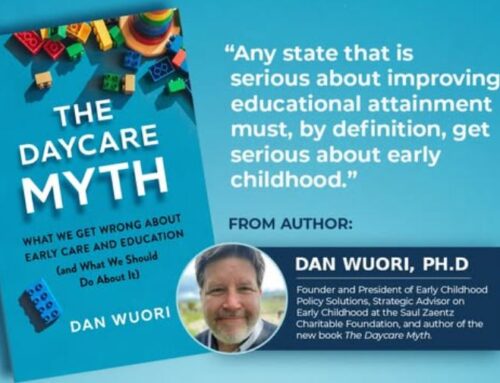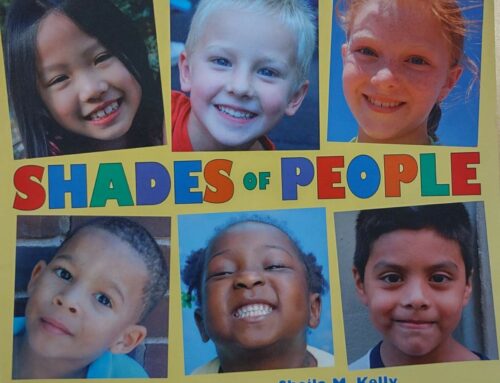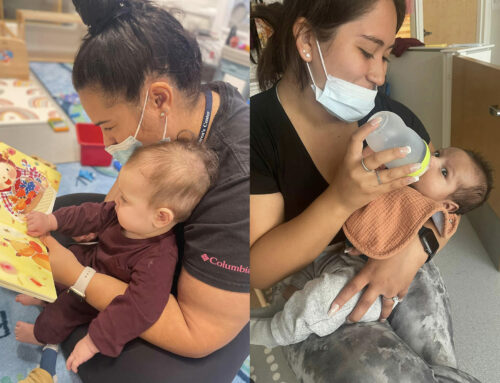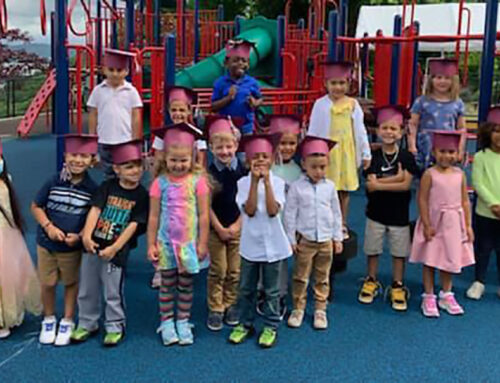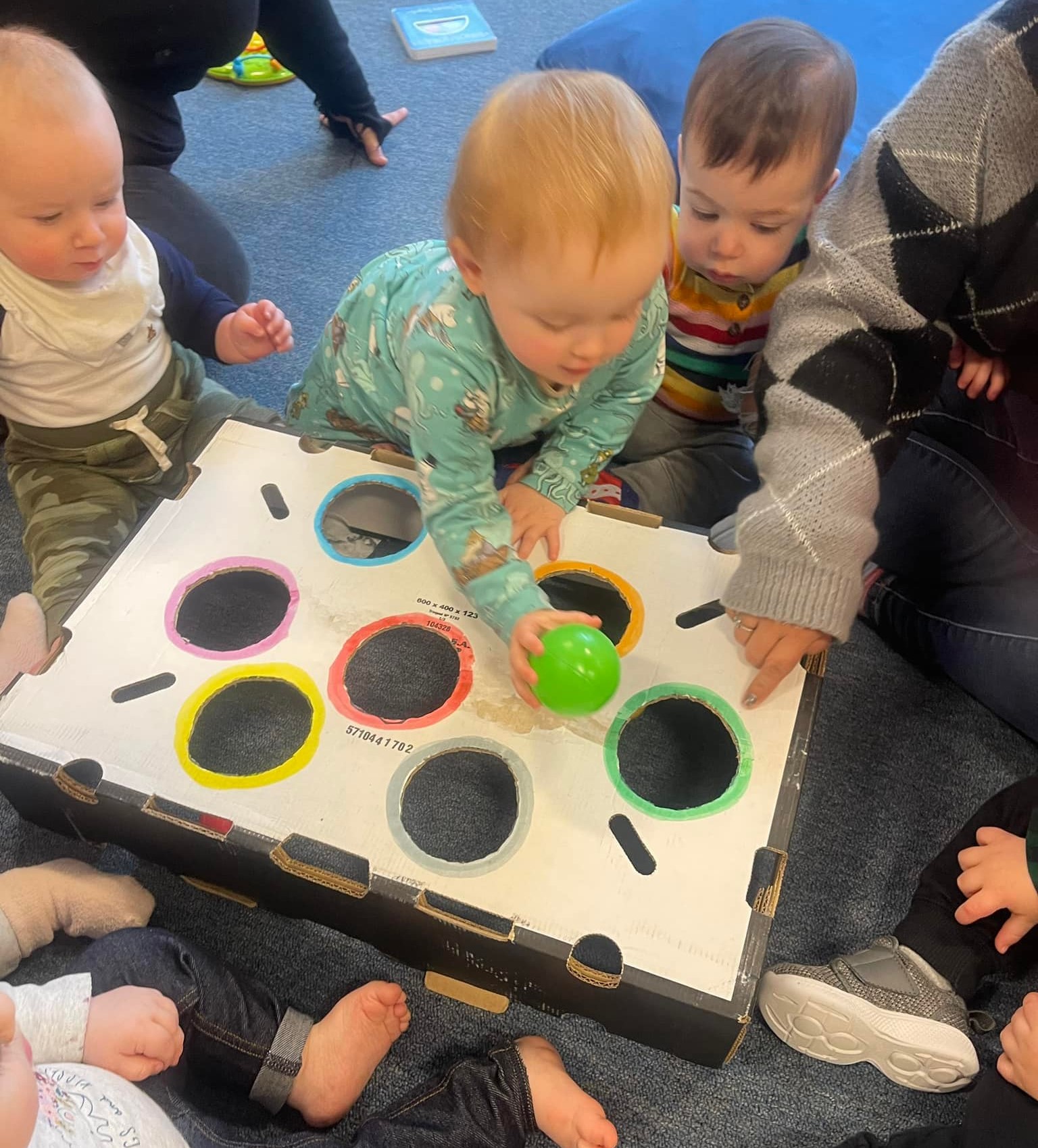
Our infant teachers created a homemade game for our babies to match the colors and fit the balls into the circles. The activity introduced the infants to object permanence as the balls disappeared into the box only to reappear seconds later. In addition, the activity helped to develop the children’s hand-eye coordination and gross motor skills as they reached across the box to the appropriate hole.
Nurturing Curiosity in Children, from Early Exploration to Future Scientists
From the moment children begin exploring the world around them, they exhibit curiosity, ask questions, and experiment with cause and effect. Just like scientists, they observe, hypothesize, and test their ideas. Whether they are investigating how a toy works, observing insects, or mixing colors, children engage in hands-on exploration, learning, and discovery. Their innate wonder and their drive to understand “why” and “how” mirrors the scientific process. By encouraging children’s natural curiosity, OCC caregivers, teachers, and staff are helping to lay the foundation for critical thinking skills and lifelong learning.
Two Ossining Children’s Center alumni, Anabel Reed and Shae Shandroff, both of whom graduated from Ossining High School this June, placed among the top 300 scholars nationally in the Regeneron Science Talent Search.
These students’ impressive accomplishments highlight the long-term impact of fostering a love for learning and exploration. Anabel, for example, cites the curiosity and critical thinking skills she developed as a preschooler at OCC as the seeds for her passion for scientific inquiry. Anabel and Shae’s success is a testament to the importance of nurturing curiosity from a young age.
To learn about the educational philosophy that stimulates and encourages the emerging scientific mind-set, read about OCC’s philosophy here:
ossiningchildrenscenter.org/mission-philosophy/
Create an interesting environment.
Babies spend one-fifth of their waking hours in focused observation. They’re curious about the world around them. Pictures on the wall; mobiles over their crib; toys with interesting shapes, textures and colors are all naturally fascinating. Give your baby safe toys and objects to explore. Rotate your supply to keep it “fresh.”
Redirect, don’t discourage.
Notice what is catching your child’s interest and create a safe way for her to explore. For example, if your toddler seems interested in your houseplants, make them inaccessible to your child, but provide an alternative. Put some dirt in a plastic box for your child to play with. If she likes to pour the water from her cup onto the high chair or floor, move her to the bathtub or backyard after the meal so she can experiment with water without making a mess. This will also teach children problem-solving skills, creative and acceptable ways to do and get what they want.
Allow time for open-ended activities.
Unlike some toys that are designed to be used a certain way, materials like boxes, blocks, water, sand, pots and pans, and art materials, can be used imaginatively.
For more tips on nurturing your child’s natural curiosity, check out the Zero to Three website: https://www.zerotothree.org/resource/tips-on-nurturing-your-childs-curiosity/

